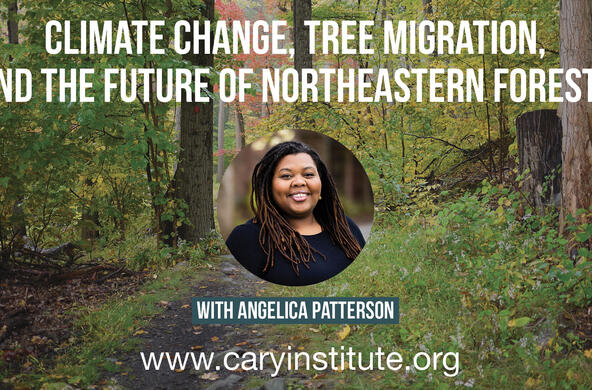At the end of the last ice age, large herds of bison roamed across Europe. But by 1927, the European bison became extinct in the wild, with only about 60 individuals remaining in captivity. Scientists have long debated the exact causes of the grazers’ near extinction, and how much humans were to blame.
A new study combines fossil evidence, ancient DNA, and modeling to disentangle the threats that forced the European bison’s population decline. Rapid environmental change and hunting by humans were the main drivers, according to the study, published Tuesday in the journal Proceedings of the Royal Society B: Biological Sciences.
Since the near-extinction of the European bison, enormous conservation efforts have helped to restore wild populations, and its numbers are on the rise. However, the study authors argue that ensuring the species’ long-term protection and recovery requires understanding why they nearly went extinct in the first place.
“Our study also suggests areas where rewilding attempts are most likely to be successful,” said lead author July Pilowsky, currently a disease ecologist at Cary Institute of Ecosystem Studies. Pilowsky completed the research while working on their PhD at University of Adelaide and University of Copenhagen.
Reconstructing the bison’s decline
“This study is one of the few attempts to reconstruct the process of species extinction,” explained co-author Rafał Kowalczyk, who heads the Mammal Research Institute at the Polish Academy of Sciences. “It is a fascinating story of a species that is the last remnant of the legendary megafauna that inhabited the European continent in the late Pleistocene, and a lesson in how easy it is to wipe out a species.”
To clarify which factors led to the European bison’s decline, Pilowsky and colleagues built a detailed simulation that combined paleoclimate data, vegetation and habitat information, the population growth and expansion of Palaeolithic humans across Eurasia, and bison population and dispersal dynamics. Historical records, fossil evidence, and ancient DNA were used to independently test the model’s accuracy.
Researchers ran 55,000 different simulations to explore how climate, hunting by humans, and land use change affected bison population and distribution across Europe. Toggling off different variables one at a time allowed the scientists to test the importance of each variable. If human removal of forests was turned down to zero, for example, and there was no change in bison abundance and range, then the scientists would conclude that land use change likely was not a factor in the species’ demise.
After reconstructing 21,000 years of European bison range dynamics, the team concluded that the bison’s range began collapsing around 14,700 years ago due to rapid warming of the climate and its effects on bison habitat. After that, the activities of a growing number of humans prevented the bison from bouncing back. Hunting caused range loss in the north and east of its distribution, while land use change was responsible for losses in the west and south. The arrival of firearms in the 1500s dramatically hastened the species’ decline.
“The stories of the past are being repeated in the present,” said Kowalczyk. Land use change, poaching, and climate change are the very same threats that imperil the European bison today. “Learning from the past, and understanding the process of species extinction, can help us better protect the species.”
Video: A map of bison abundance and range over time, based on thousands of simulations. Abundance is shown as the number of bison per 76 km x 87 km grid cell. Grey indicates areas where there is less than 25% model agreement on bison occupancy — in other words, high uncertainty. Red points show radiocarbon-dated fossils of European bison, which were used to verify the model’s accuracy. Credit: July Pilowsky
Maximizing conservation efforts
The European bison is a priority species for conservation because it serves an important role as an ecosystem engineer, restoring grassland habitat. Thanks to efforts to reestablish and rewild the species, there are approximately 7,300 free-ranging European bison today. However, rewilding has been done without a strong understanding of habitats and regions where bison once thrived. As a result, the species has been released at sites ranging from the coastal dunes of the Netherlands to the mountains of the French Alps and the Mediterranean climate of Spain, with mixed success. Of the 47 free-living European bison populations, only eight have more than 150 adults, and all eight depend on supplemental feeding due to poor habitat suitability.
By identifying areas where the European bison would be distributed today if hunting and land use change had not occurred, the study zeroes in on regions that are most suitable for the species’ reintroduction. These include parts of Poland, Ukraine, and western Russia.
With habitat restoration, parts of the Balkans and Germany also have the potential to be good sites for bison reintroduction.
“I hope that the maps we've produced can help inform future efforts in terms of where reintroduction efforts should occur,” said Pilowsky. “It's especially crucial because of the war in Ukraine. Over 50 percent of all free-living bison are in Ukraine, and conservationists are really worried.”
Next steps
Pilowsky next hopes to adjust the simulations to identify sites that are not only suitable for European bison today, but also in the future under human-caused climate and environmental change.
The study’s methodology could also be adapted to reconstruct the causes of population declines and range collapses of other large herbivores, including American bison, to improve awareness of past threats and enrich current conservation plans.
Lessons learned are informing new lines of inquiry for Pilowsky. At Cary Institute, they are translating the bison simulation code into new software that models disease transmission in wildlife. “I literally have my bison code open on one monitor and my new code that I'm building on another monitor,” they said. Instead of simulating bison abundance and range, the new software shows the prevalence and distribution of a disease in a species over time.






